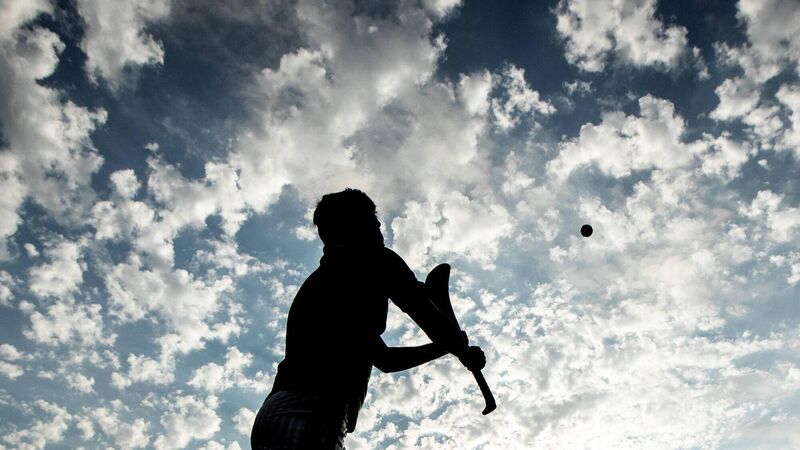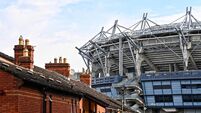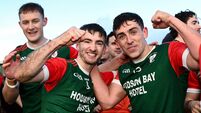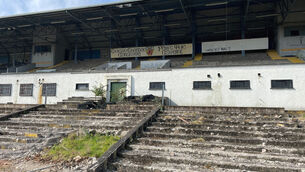Paul Rouse: How the Land Commission grow the GAA in many areas

After the establishment of the Irish Free State, visions of independent Ireland involved a country backboned by prosperous farmers. It was this group that was also understood to be the driving force in GAA clubs
A whole section of the history of modern Ireland cannot be properly told because the documents which tell of it sit in folders buried in the National Archives. This is the history of the Land Commission — and it is fundamental to understanding the modern position of the GAA all across rural Ireland.
For more than 100 years the Land Commission was the body responsible for redistributing farmland in Ireland. It was set up in the 1880s in the aftermath of the Land War. It initially engaged in fixing rents — fair rents —on farms, but quickly moved into the sale of farmland from landlords to their tenants. Essentially, at this point what it did was use government finance to buy out the freehold of landlords and selling it on to tenants who paid back the capital over a set period of time: The famous land annuities.
After the establishment of the Irish Free State, visions of independent Ireland involved a country backboned by prosperous farmers. It was this group that was also understood to be the driving force in GAA clubs.
Farming was to be the economic engine of the country and of course, it accounted for more than 50% of the Irish economy, but it was also to be a way of life. That is to say it was to have a social and economic purpose.
It was in Irish small farms that the Gaelic way of life was to be safeguarded and developed — the language, the music and the games were to be bound together and to flourish together. The Land Commission was to play a central role in this ambition. It was reconstituted in 1923 and set about redistributing the land held by landlords and what were termed ‘graziers’. Over the following 10 years, around 450,000 acres were redistributed to 24,000 families.
Politicians were routinely lobbied for land. You see this in the letters received by TDs throughout the 1930s — the letters often reveal the sheer scale of rural poverty in Ireland.
One woman, for example, wrote to Limerick TD Donnchadh Ó Briain to plead the case of her son who was “married with one child and currently farmed eight acres of craggy land, which you may understand is hard to make a living on. I wonder if you can do anything for him to get a few more acres”.
The belief was always there that getting land depended on the power of the TD and on which party was in power. This may have been a deeply unfair perception of how the Land Commission worked, but it was a real one.
The policy of successive governments was to create small farms. The problem with it was that the size of the small farms created by the State was so small — never more than 50 acres — as to render them not just incapable of expansion, but increasingly incapable even of survival.
After 1945, 25,800 new small farms were created. The Land Commission only ceased acquiring land in the early 1980s and was dissolved in 1999. The abolition came down in the end to the matter of economics. It was a simple fact that the farms created by the Commission were too small to be profitable, indeed were described as ‘rural slums’ in the Farmers’ Journal.
Allowing for that its great legacy was of course the redistribution of the land of Ireland. You cannot get away from the basic fact there was an extraordinary transfer of wealth — a transfer that amounts to nothing short of revolution — through the changing ownership of the farmland in Ireland, particularly in the last decades of the 19th and the first decades of the 20th.
But it also helped to underpin a sporting revolution. There are GAA clubs across Ireland who received land through the Land Commission for the establishment of permanent pitches. Indeed, the acquisition of land through the Commission was what made possible the long-term development of the GAA in many areas.
But another aspect of the enterprise also had a huge impact. A government scheme introduced in the mid-1930s sought to establish ‘Gaeltacht colonies’ in good farming lands of the east and midlands. For example, in 1935 almost 30 Irish speakers were moved onto Land Commission farms.
Part of this process involved an attempt to consolidate fragmented western farms and improve their economic viability. A recently published GAA club history — , edited by Tom Hunt — includes the story of how the life of a country parish was transformed by the arrival of families from the west of Ireland as part of rural resettlement through the Land Commission.
In March 1956, the Lowry, Casey, Corcoran, and Joyce families from Cornamona arrived on a special CIÉ bus to Dysart in Co Westmeath. CIÉ lorries also brought up the families’ sheep, cattle, donkeys, dogs and horse. The land they were placed on — in farms of 35-45 acres — a were the broken-up holdings of the old Casey Estate.
The arrival of the migrants was reported in the newspapers and it was speculated that ‘this new colony of grand, upright, friendly Gaelic speakers will bring an extended social life’ to the nearby village of Castletown Geoghegan. It also transformed the sporting fortunes of the area. Martin Lowry had played senior football with Oughterard and he now lined out for the team in his new parish, as did Mattie Corcoran who went on to give decades of service as a player, official and selector.
But it was the children of the families who made the most profound impact. They gathered in the fields of their farms to play hurling and football, and many of them went on to play for the local clubs (Castletown Geoghegan in hurling and St. Malachy’s in football), and then for Westmeath.
In 1972, Seán Casey because the first St Malachy’s player to play for Westmeath, and he was joined the following year by Tommy Lowry. He was the first of the Lowry brothers to make this step and Tom Hunt writes: “The Lowry family have possibly made a greater impact on hurling and football in Westmeath than any other family in the GAA history of the county. Other families might have made a greater impact in hurling or football but as a dual-sport family the Lowry brothers take some beating.”
All told, the Lowry brothers played in 29 senior county finals and injuries to Mick in 1979 (hurling) and Martin in 1982 (football) cost the brothers two more appearances. All four lined out for St Malachy’s when the club won the senior title in 1981. Tommy (two), Willie (three), and Mick (four) won nine county senior hurling medals and played in 15 hurling finals for Castletown Geoghegan.
Tom Hunt refers to Willie Lowry as “the county’s greatest dual player”.
Indeed, he is rightly described by Owen McCann in his book as “widely acclaimed for his football genius”. There was a great moment in the hot summer of 1996 when the Flying Pig Festival was held in Clonbur in north Galway.
There was a regatta, and a fair day, music in the streets, all-night drinking and the arrival of a pig on a helicopter. And there was a football match in which the local team played a team made up of the sons of those who had left (as well as a few extravagantly gifted add-ins); it was a different sort of homecoming.
The story of the migrants from the west is just one of the stories told in what is a model history of a GAA club.







